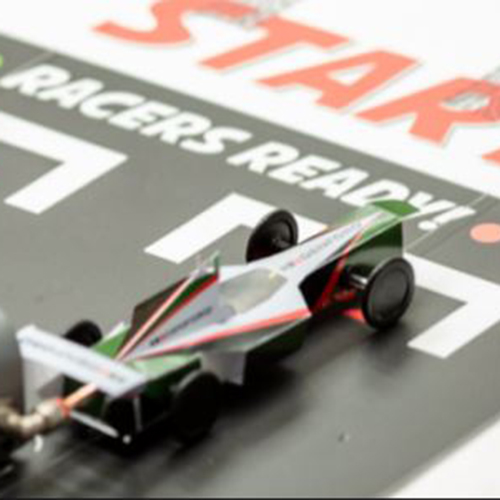29 November 2021

From the adrenalin of a Formula One racetrack to the silent depths of a deep dive, race cars and submarines alike will be put to the test as more than 100 South Australia students get their gear on for the State finals of the F1 and Subs in Schools STEM Challenge tomorrow.
Known as the world’s foremost student competition for Science, Technology, Engineering and Mathematics (STEM), the competition involves more than 22,000 in 17,000 schools across 51 nations.
Featuring miniature Formula 1 race cars and futuristic submarines, students will showcase their designs, planning, and performance as they battle it out to be the best of the best.
Hosted by the University of South Australia and supported by the South Australian Government, the Re-Engineering Australia (REA) program is encouraging South Australian school children to embrace STEM to ensure that Australia has the highly skilled, technical, and creative minds that are needed for a productive and sustainable future.
Increasing Australia’s capability in STEM is at the core of our national science agenda, with programs like the F1 in Schools and the Subs in Schools program driving interest and participation.
UniSA graduate, Founder and Chief Executive of REA, Dr Michael Myers OAM, says engaging boys and girls with STEM is vital for Australia’s future economy, yet the process to do so is very different.
“We need to inspire, engage and educate kids about the value of careers in STEM, but it’s really important to understand that what makes STEM appealing to boys is very different to what girls find interesting about this field,” Dr Myers says.
“Through our work with UniSA, we have 16 years of data that shows how you can influence career decisions in children, and what’s particularly interesting is the language that you need to get boys and girls engaged in STEM.
“Boys continuously seek out human contact and they learn by watching and doing, which makes apprenticeship and role modelling so valuable for them.
“To attract boys to careers in STEM, we need to explain that they’ll be meeting lots of people, doing lots of exciting things, working in and belonging to teams and engaging with many experts who they can learn from.
“Girls on the other hand seek out an understanding of a situation so that they can coordinate and manage it.
“To attract girls to STEM we need to provide lots of information so that they can understand the complexity of a situation and manage their options.
“This program helps them both understand their different strengths and how to communicate and work together on a common goal.”
Premier of South Australia Steven Marshall says the state government was a strong supporter of initiatives like Subs in Schools and F1 in Schools, which are crucial in inspiring the next generation to pursue STEM careers and take advantage of future jobs in naval shipbuilding and the defence industry.
“It’s our young people who will be needed to deliver future defence and naval shipbuilding projects in South Australia, so it’s important we continue building our workforce now by encouraging students to develop an interest in STEM,” Premier Marshall says.
Available to children aged nine to 19, these programs are also delivering incredible results at school, with 95 per cent of teachers reporting significant improvements in communication skills, 89 percent showing increases in teamwork, and 82 per cent of children saying they’d change their career director to STEM.
Notes to editors
- The competition will be held on UniSA’s Magill campus over Tuesday 30 November and Wednesday 1 December. Students will be showcasing their work via displays, racing miniature F1 cars & undertaking Submarine sea trials each day between 9am and 4pm.
- Dr Michael Myers OAM is a graduate of UniSA’s Doctor of Business Administration and has worked with UniSA’s Professor Brenton Dansie to establish this research.
…………………………………………………………………………………………………………………………
UniSA Media contact: Annabel Mansfield M: +61 417 717 504 E: Annabel.Mansfield@unisa.edu.au




